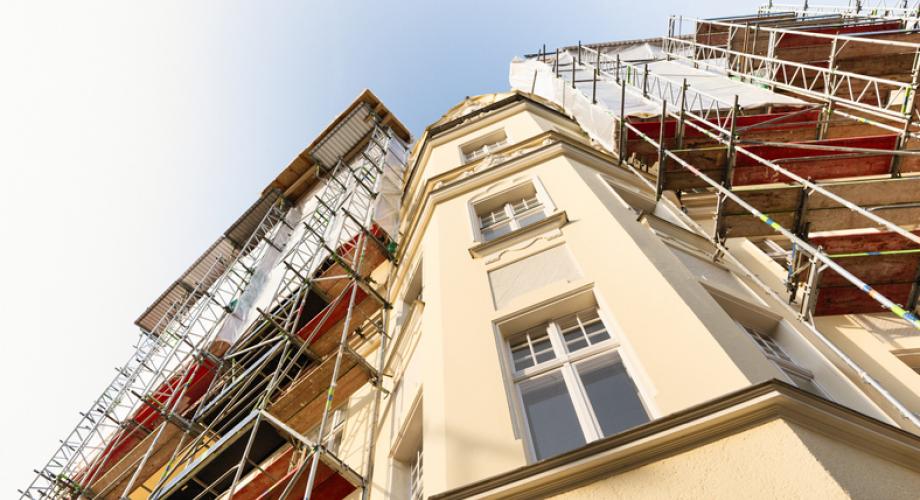For renovations to be successful, investors need to choose the right market and community. But those are only the first steps.
Apartment investors have been attracted to “value-add investments” throughout the recovery. Year after year during the past decade, between 15 percent and 20 percent of the dollars spent to buy apartment properties have been for value-add investments, according to data from Real Capital Analytics through 2018.
Last year, investors bought more than $26 billion in apartment properties for value-add investments over the 12-month period ending March 2019, according Real Capital Analytics. During the past five years, that figure has ranged between $22 billion and $34 billion, swelling in 2016 and 2018.
“There are billions of dollars aggressively chasing value-add multifamily housing opportunities, especially with larger portfolios,” says Phil Brosseau, Vice Chairman, Multifamily, Capital Markets, CBRE.
Most domestic and foreign capital investors prefer older apartment communities built before 2010, indicating that value-add redevelopment will remain the favored strategy for raising and deploying capital, Brosseau says.
However, investors need to be careful, especially as prices rise for apartment properties and a growing number of economists worry about the possibility of an economic downturn in the next two years. Here are four ways to avoid value-add mistakes.
Pick the Right Market
To succeed, value-add investors need to make sure that the building they plan to renovate will serve a genuine need in the market.
“Failure to complete a rigorous study of all aspects of the current asset and the submarket in which it resides can cause a value-add project to fail,” says Steven DeFrancis, CEO of Cortland, a leader in value-add investment.
For example, as Cortland planned its renovation of Watermark at East Cobb, an apartment community in Marietta, Ga., it studied “population and job growth forecasts, current and forecasted market supply, rents and quality of competitive assets, school district, and nearby employers,” says DeFrancis.
Strong value-add redevelopment markets will often show a strong demand for older, nicely renovated apartments. That shouldn’t be too difficult in 2019. “Overall occupancy should hover near the 95 percent mark, with almost no product availability continuing to register in Class B and especially Class C units,” Greg Willett, chief economist for RealPage, says.
The local market should also have a growing base of residents who are paying less than 30 percent of their incomes for rent. That means they could probably pay more to live in a renovated apartments – without having to give up necessities. “You don’t want to increase the rents to be out of reach,” says Matt Ferrari, head of acquisitions and dispositions for TruAmerica Multifamily.
Pick Properties with Room to Improve
Value-add investors also carefully choose apartment buildings that have clear room for improvement.
A promising area for value-add redevelopment should show a difference of several hundred dollars between the cost of renting a new, luxury apartment and the cost of renting an older, un-renovated apartment. In a “value-add” community, the newly-renovated apartments should be able to charge a few hundred dollars more each month than the older or un-renovated apartments nearby, and still be a bargain of more than $100 a month in rent compared to the cost of new construction.
Ideally, there should also be a clear difference between the rents already being earned at nicely renovated apartments in the area and the apartments that investors plan to renovate themselves. “If an apartment property is already performing at market value, there probably is not much opportunity,” says John Daley, Senior Vice President of Design and Construction at Waterton, which just purchased Bay Village Apartments in Vallejo, Calif.
In sum, investors should be able to show why they believe renters will look at the other options in the market and choose to live at their renovated property at the rents that they propose.
Plan for High Construction Costs
Value-add investors also need to include rising construction costs in their plans to renovate apartments. The cost of labor and materials has been volatile, particularly for commodities such as steel and lumber, that have been affected by tough negotiations between the United States and its leading trading partners, according to data from the Associated General Contractors of America.
Because rents today are growing more slowly, managers cannot count on rising rents to make up for a surprising increase in the cost of labor and materials.
“In this past 12 months, we hit a point where construction cost inflation is well above rent growth inflation,” says TruAmerica’s Ferrari.
To protect themselves from rising costs, developers are increasing the amount of money in their contingency budgets.
Make Green Renovations Pay
Value-add redevelopments also often include renovations that cut the cost of energy at their apartment properties. Savvy developers make sure to choose renovations that are likely to quickly add value and save money.
“We all want to be environmentally conscious, but we have to get the return on investment,” says Daley. “We make an attempt to make our green renovations earn back their cost in five years.”
Developers make sure to balance the cost of renovations against the savings from lower energy bills and interest rates. Water-saving improvements tend to quickly pay for themselves. Energy improvements such as solar panels can be more expensive.
Borrowers who pledge to cut the water and energy used at their buildings by 30 percent can qualify for Fannie May and Freddie Mac’s popular “green” lending programs and receive interest rates by as much at 30 basis points lower than conventional financing.
“We have gotten very deep into the green programs,” says Daley.
Bendix Anderson is a freelance reporter
